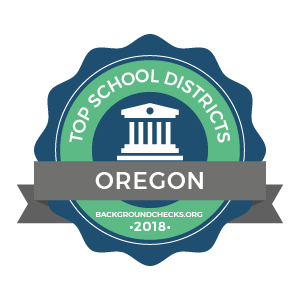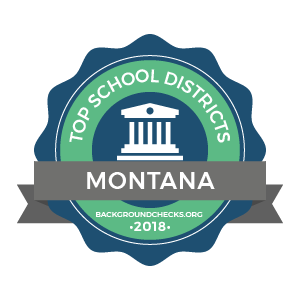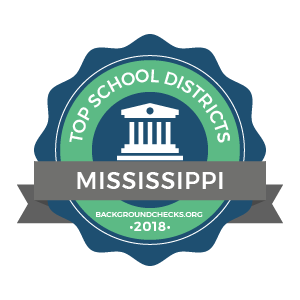Author Archives: Jason

All dating has its share of risks, and dating in the LGBTQ community is no different. In fact, LGBTQ individuals might be more vulnerable: experiencing a 23.2% rate of sexual victimization, compared to just 12.3% for heterosexuals, according to a survey done by the Urban Institute.
This statistic indicates that members of the LGBTQ community should be vigilant and aware of the risks when dating, both online and in person. Of course, not every date is going to be dangerous or risky, but it helps a great deal to know the facts, risk factors, and strategies for minimizing the hazards of LGBTQ dating. Our guide will point the way towards a safe, successful dating life.
Statistics: Dangers of Dating as an LGBTQ Person
Understanding the statistics of the dangers faced by LGBTQ persons--both for teens and adults--in the dating scene means knowing what to look out for and being able to avoid becoming a statistic, yourself. Some threats are universal, while others are specific to--or more commonplace in-- the LGBTQ community. The common element is that knowledge is power: educating yourself on the data is crucial in making safer dating choices in the future.
Teens and Adolescents
- According to a 2015 CDC study, 18% of LBGTQ students have experienced dating violence in the past.
- The CDC study also found that 23% of LGBTQ students that had been on a date in the past year experienced sexual dating violence, while an alarming 18% claim to have been coerced into sex at some point.
- In contrast, a study done by the Urban Institute published much grimmer findings, reporting that 42.8% of LGBTQ youth experienced physical abuse at the hands of a dating partner, compared to 29% of heterosexual youth.
- When it comes to dating violence, transgender youth are most at risk: 88.9% reported experiencing dating violence. (Urban Institute)
- Violence is not the only dating danger facing LGBTQ youth: In 2014, 8 out of 10 diagnoses of HIV in young people were of gay and bisexual men. (CDC)
Adults
- It seems LGBTQ adults experience less violence than do LGBTQ youth, as a survey done by Travel Gay Asia and Gay Star News found just 5% reporting being threatened physically during a date.
- However, contracting a sexually transmitted illness is a huge concern, as the CDC reported in 2014 that gay men, and men that have sex with men who resist classification, accounted for 83% of syphilis cases in the U.S. where the sexual partner could be identified, and are at risk for contracting other STIs such as hepatitis and HPV.
- Sadly, the same study found that gay men and other men with male sexual partners had a 17 times higher risk of contracting anal cancer than heterosexual men.
- People of color experience greater hostility on the gay dating scene, as a study done by FS magazine found that 80% of black men, 75% of south asian men, and 79% of asian men have experienced racism in their quest to find a partner.
Statistics: LGBTQ Dating Apps
- LGBTQ singles use dating apps frequently: A Match survey found that 56% of LGBTQ community members have dated somebody they met online, while nearly two-thirds of transgender individuals (65%) have done so.
- Yet things aren’t always what they seem, as 56% of LGBTQ persons polled in a survey by Travel Gay Asia and Gay Star News claimed that they have found profiles on dating apps that were fake or misleading.
- The same survey reported that 35% of users had experienced harassment or abuse online.
- When dating app matches advanced into a real world encounter, 21% of participants in the poll claimed to experience an incident where their sexual limits were not respected by someone they met online.
- In a statistic not just pertinent to LGBTQ’s, but all users of online dating sites and apps, the FBI reported that online dating scams increased fourfold in the five years leading up to 2016.
How to Use Dating Apps Safely
Despite the potentially alarming statistics in the previous section, LGBTQ community members still use dating apps often--with over 40% of users of the most popular apps claiming they log into them on a daily basis--and to great success, as 80% of gay men meet partners online these days, compared to just 14% in 2001.
The key is to use dating apps safely and wisely, as well as to make sure to use the right ones--as not all dating apps are created equally.
Using the most secure dating apps
Grindr is definitely the most popular LGBTQ dating app, but is it the best, or the safest?
In terms of leaving the most users satisfied, Jack’d led a Huffington Post ranking of LGBTQ dating apps based on customer satisfaction, followed by Hornet. While this ranking doesn’t necessarily mean that they are also the safest, Hornet’s policy of prompting its users to update their HIV status on a trimonthly basis goes a long way.
Hornet also takes steps to veil the exact location of its users for safety purposes, even if you neglect to turn off the “show my distance” feature in the settings menu. Grindr, on the other hand, has been criticized in the past for a flaw that revealed the exact location of 90% of its users.
Despite being called out for its poor security in the past, Grindr continues to get called out for its poor efforts in protecting users. Not only do users have to worry about potential stalking and harassment by fellow users of the app, many countries have laws that are hostile against members of the LGBTQ community, such as Egypt, which is currently undergoing an extreme ‘crackdown’ on gay and transgender individuals. Authorities may use apps to determine the location of LGBTQ individuals and arrest them, which is why it's better to use an app like Hornet, with built-in security features, rather than taking your chances with an app that doesn’t.
Screening fake profiles
- Ask for more pictures. If the person’s profile picture seems fake, or they only post one picture, then ask to see a few more. Fakers may not have many on hand, and their reluctance to follow through with your request will all but confirm your suspicions.
- Do a Google reverse image search. Sure, this is a little stalker-y in its own right, but if the search returns a dozen examples of some stock image, then you’ve discovered your answer.
- Check Facebook, too. Yeah, this is going even further in that direction, but it’s also a great way to make sure if someone is legit or not. Keep it at that, for ethical purposes.
- Be concerned if they come on too strong. If a user’s profile seems all too eager, or they want to meet up right after connecting, its time to step back and consider the situation. Many of the most overzealous app users are propagating porn or prostitution scams.
- Be wary of error-ridden profiles and messages. Sure, we aren’t all the best at spelling and grammar--especially on our phones--but very poor wording may indicate a scammer hailing from West Africa or the Philippines, the most common countries for such scams. Alternately, it could be a bot.
- Look for obvious lies or contradictions in the story. If a user’s background seems too good to be true, or they appear to contradict past statements, it’s time to cease conversation.
- Ask for a phone number. The sooner you’ll be able to move off the app, the sooner you’ll be able to determine a person’s legitimacy.
Choosing a safe date
Once you’ve found a someone online that you’re hoping to meet in person, it’s time to take it to the real world. Follow these few tips to ensure that the meeting is without risks.
- Meet in a public place. Like a coffee shop or a restaurant, not a dark, hazy club with loud music pumping. Meeting in public is the best way to feel out the situation. Ignore a user’s repeated requests to meet in private if they do so, even if the offer sounds sexually enticing.
- Let friends know about your date. In your first meeting with someone off of a dating app, it’s good to fill a friend in on where you are going and when, just in case.
- Opt for a group date. This may seem counterproductive, or awkward if your intent is romance or a sexual fling, yet it’s a great way to be safe and weed out those with bad intentions. Even with friends in tow, if you make a connection with your date, it’s no sweat meeting one-on-one the next time around.
Staying safe on your date
Alright, you’ve weeded out the fakes and set up a meeting with a good match, now it’s time to follow these guidelines to ensure than the date is safe and fruitful.
- Agree on expectations beforehand. People’s physical expectations for a date vary a lot: a Match survey found that 57% of LGBTQ singles are looking for a kiss, 25% a heavy make out session, while 9% hope to have sex. Be clear on your limits before meeting so it doesn’t come up awkwardly later.
- Don’t overdo it. Limit your alcohol intake if you’re meeting somewhere that serves drinks. This will lower the chances that you make a decision that you’ll regret, or of you getting taken advantage of.
- Pass on the drugs. You might enjoy using recreational drugs on occasion, but a first date is not the time to do them. You never know what you are getting, and taking drugs that are too strong, or not what they are advertised to be means that you lose control of the situation.
- Dress modestly. It’s okay dress in your style, but it’s smart to not to wear something that might give the wrong impression. Gaudy jewelry is also something you might want to leave at home until a later date.
- If you feel uncomfortable, end it. If something your date says or does gives you the impression that it is not the kind of person you want to be with, or that the situation might become violent, politely--but tersely--end the date, and leave. Never feel obligated to continue on a date when you have a bad feeling about it.
- In the case of an incident: file a report. If a date ends badly with the person attempting to coerce you into something you aren’t comfortable with, report it to both the police AND those behind the app. As an LGBTQ person, you may not be used to trusting authority figures, but it’s better to have an individual brought out into the open and barred from using the app again.
- Use protection. Sure, you know by now to not have unprotected sex, but in light of the alarming statistics on STD’s in the LGBTQ community, it bears repeating: use protection.
Additional Resources
- HIV and Young Men Who Have Sex With Men - A CDC guide with HIV facts and prevention tips for YMSM.
- Loveisrespect.org - Site with resources and information on preventing LGBTQ dating abuse.
- Top 10 Gay Apps by Customer Satisfaction - Huffington Post ranking mentioned earlier in the guide.
- The Best Gay Dating Apps - Another excellent guide with selections catered to subsections of the LGBTQ community.
- Scamdigger - A list of known scam profiles found on dating apps and sites.












